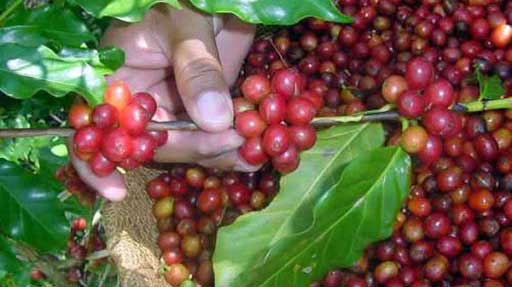 Guantanamo.- A slight decrease of about 63 tons is estimated for the current coffee harvest, which provides the first grains in most of the eight municipalities that produce this exportable product in the Guantánamo Province.
Guantanamo.- A slight decrease of about 63 tons is estimated for the current coffee harvest, which provides the first grains in most of the eight municipalities that produce this exportable product in the Guantánamo Province.
According to estimates, the harvest should yield 1,172 tons of green coffee, 606 of the Arabica variety and 566 of the Robusta variety. The contribution of the latter variety will offset, to a large extent, the significant decrease of the former harvest, affected by poor flowering.
The El Salvador, Manuel Tames and Niceto Pérez municipalities, where Robusta predominates, plan to grow in the current season. The remaining territories foresee a decrease compared to the previous harvest, according to a report of Bier Armando Fong Berguelich, a specialist responsible for coffee, cocoa and coconut production in the provincial delegation of Agriculture.
Maisí Municipality experiences the most significant drop and the one with the greatest impact on the estimate. It produces some 228 tons, equivalent to 43 percent of what was collected in the previous harvest.
It must be taken into account that the production of Maisi Municipality, the largest producer of coffee berries in Guantánamo, falls on the Arabica variety, the most affected in yields.
Given the behavior of the varieties, it is most likely that the coffee harvest will be carried out slow until the end of the year, when it must step up the pace, starting with the ripening of the robusta, which is traditionally late.
Among the inputs demanded by the harvest, that present the greatest difficulties in the shortage of nails and horseshoes, as well as lubricants for the vehicles and the processing machines.
A positive aspect is the workforce in the different municipalities and the availability of the sacks are ready.